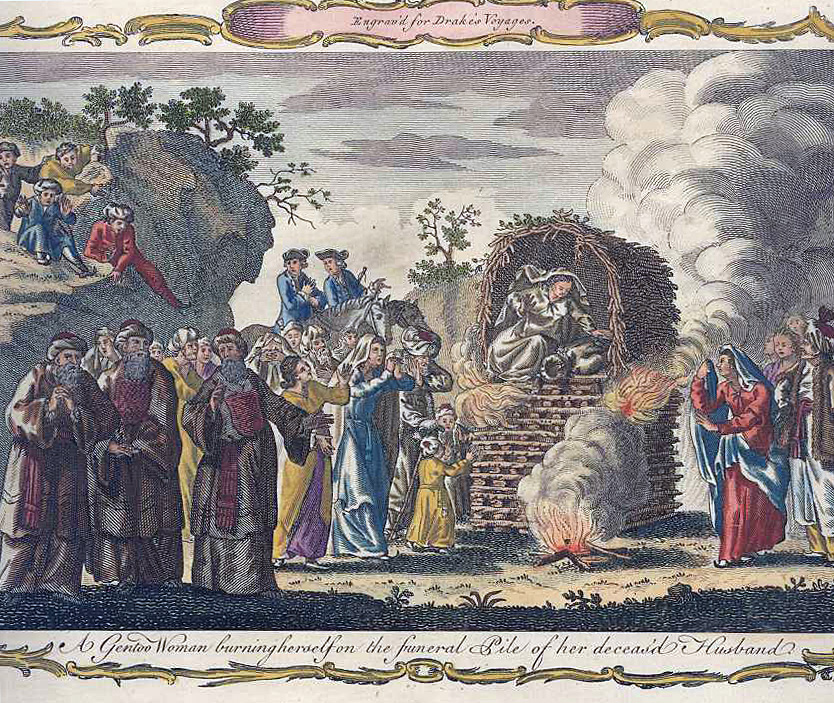Sati Engraving: A Gentoo Woman Burning Herself

Annotation
From the late 1500s and into early 1800s, adventurous and artistically talented European men and a few women traveled to Asia and India, in particular, to see sites and cultures considered exotic. They recorded their impression in prose and in sketches, the latter being transformed into engravings that illustrated their published accounts of their travels. These books were significant sources of income for their authors, their engravers, and their publishers. They included engravings that were influential in forming the visual images of Asian lands, peoples, and customs for literate Europeans. This engraving of a sati was published a century after Francois Bernier’s 1667 letter to Monsieur Jean Chapelain in a collection of travel accounts covering Europe, Asia, Africa, and the Americas. In it, all the people are portrayed as Europeans and in European-style dress. For example the brahmans at the left side are attired as Baroque painters sometimes portrayed Old Testament prophets. Consider what viewers might infer about the widow and the European observers.
This source is a part of the Sati teaching module.
Credits
A Gentoo Woman burning herself on the funeral Pile of her deceas’d Husband. Copper engraving from Edward Cavendish Drake. In A New Universal Collection of Authentic and Entertaining Voyages and Travels. London: J. Cooke, 1768.